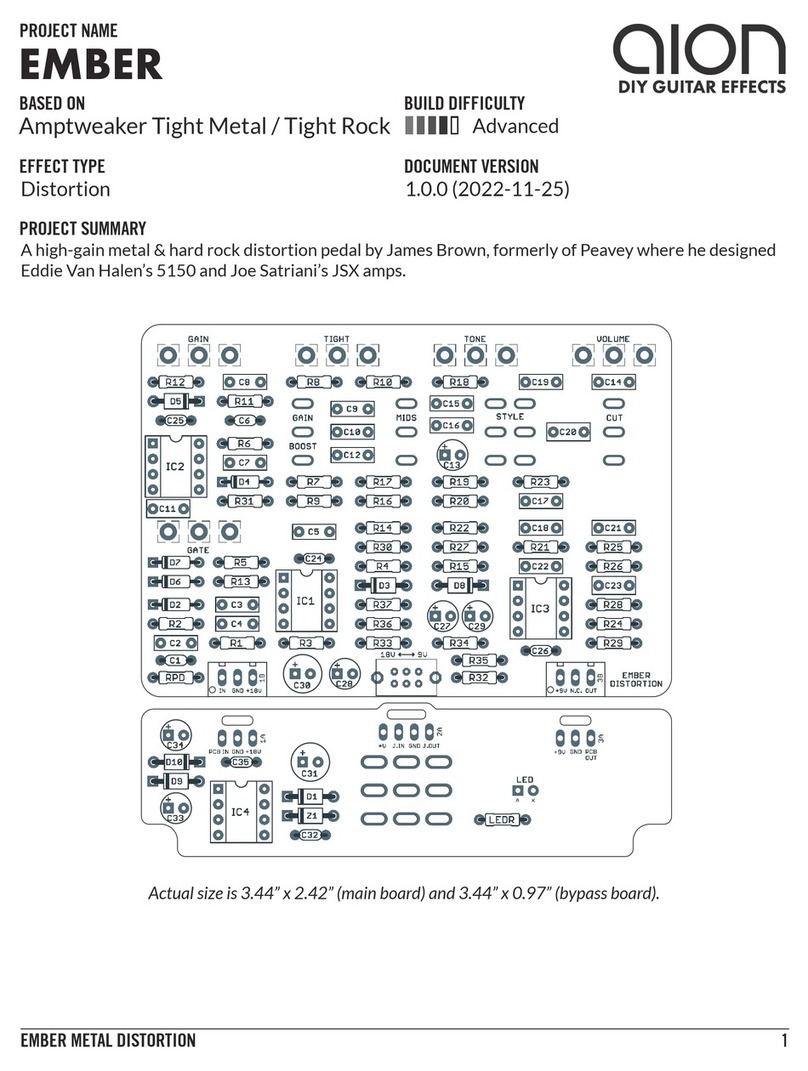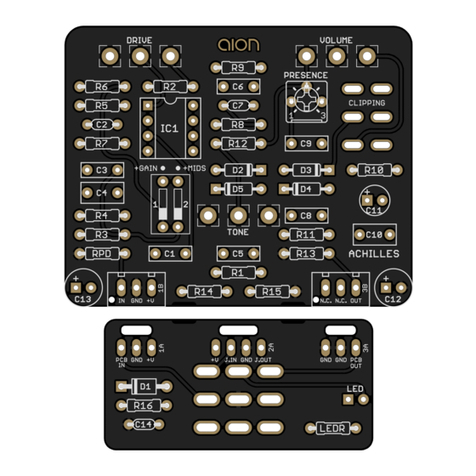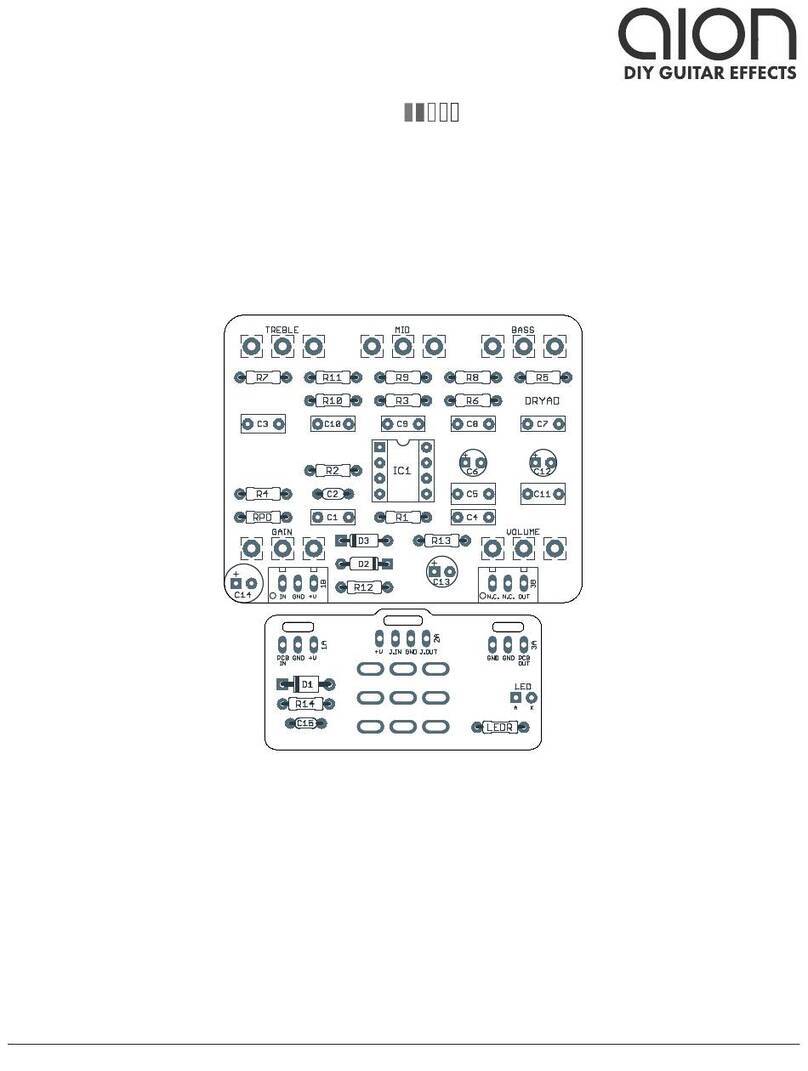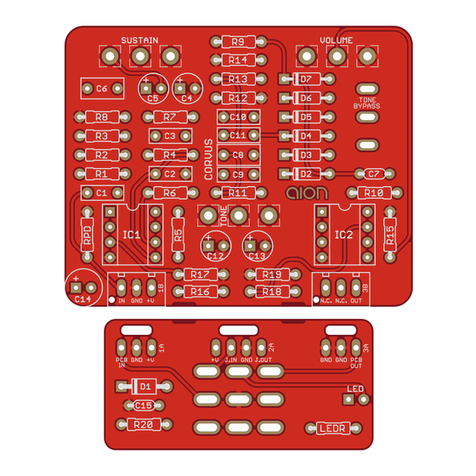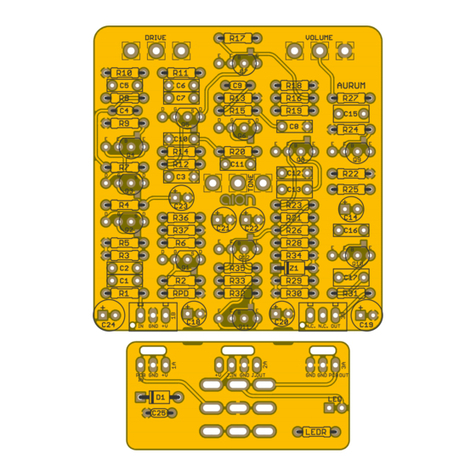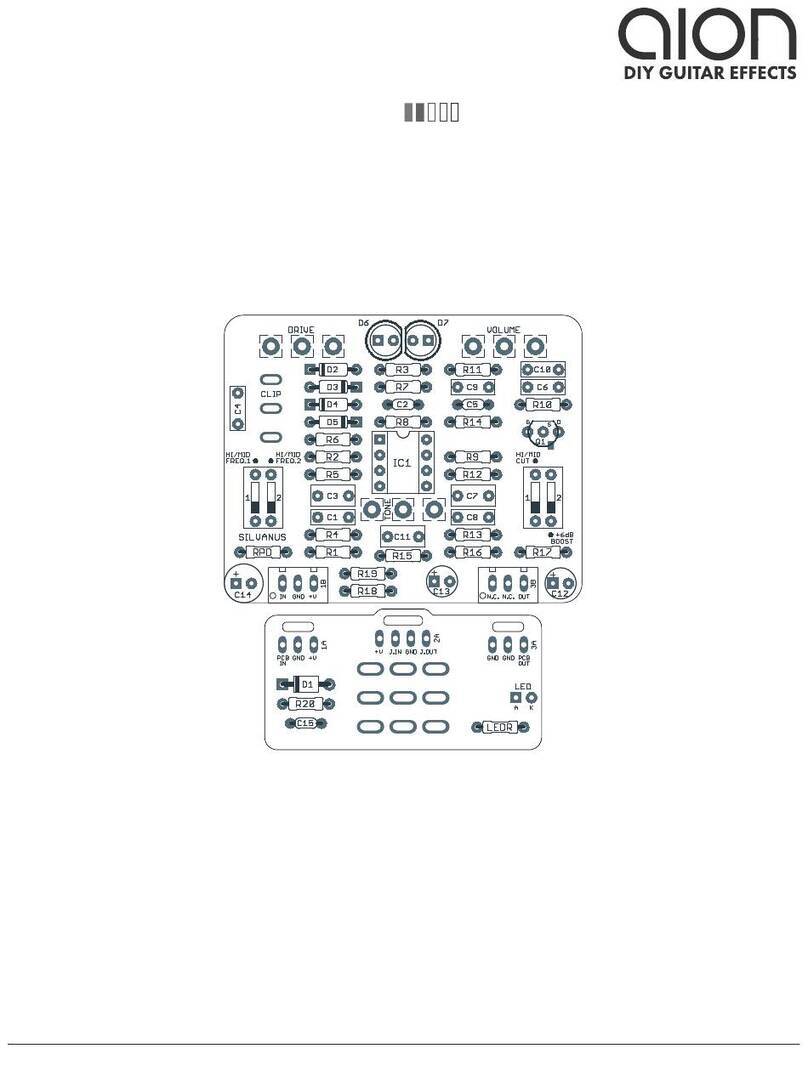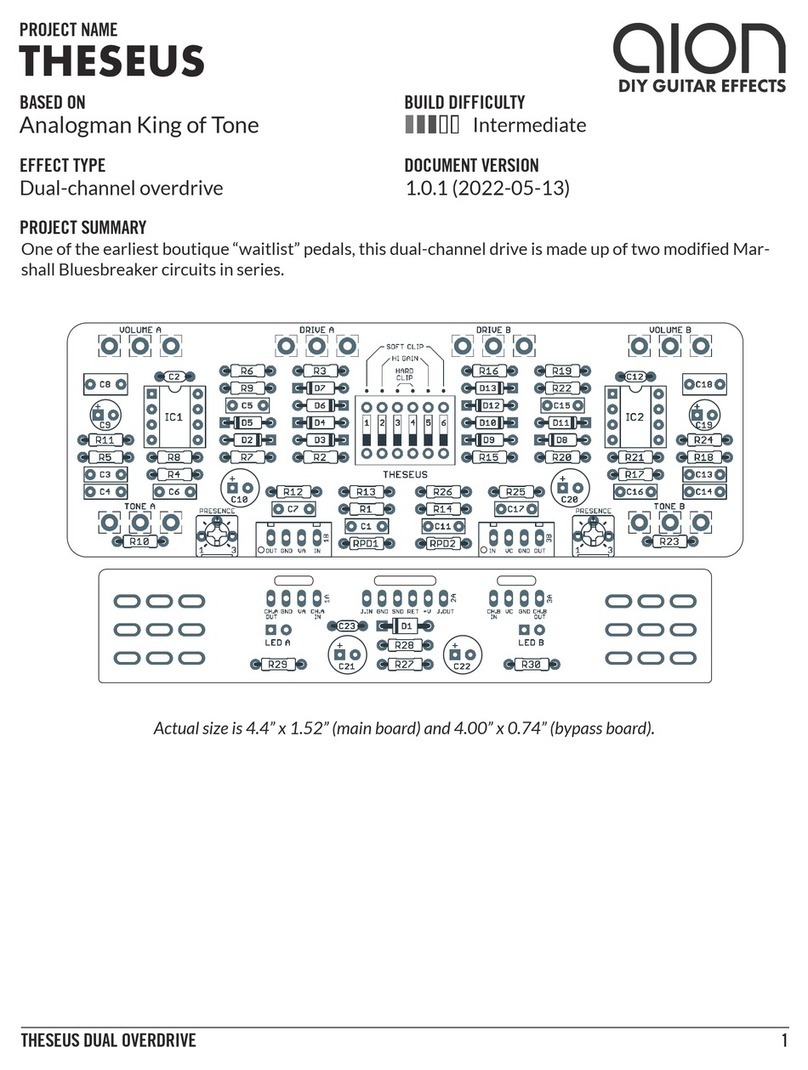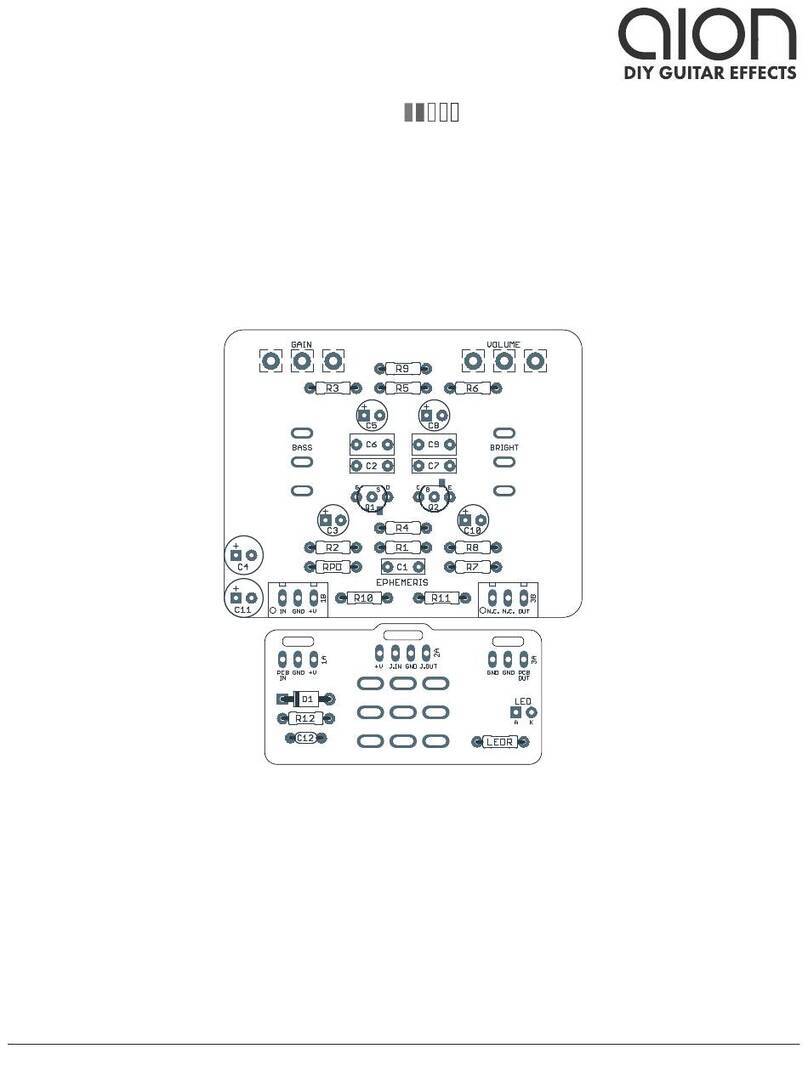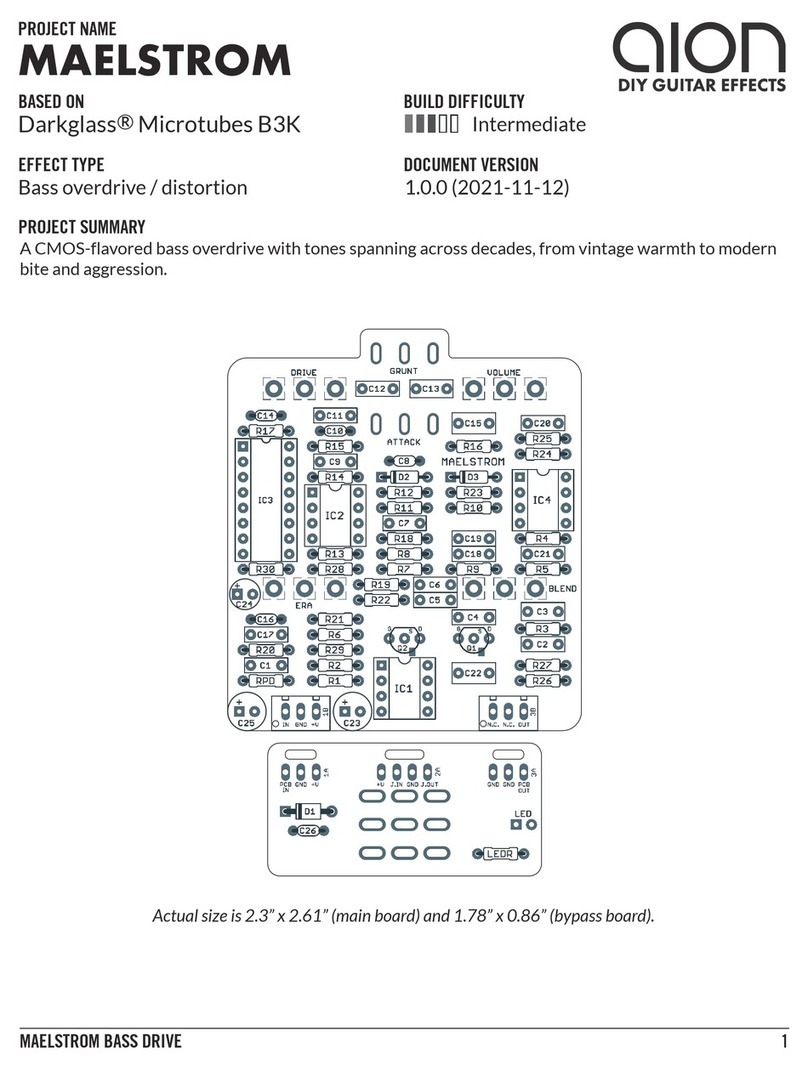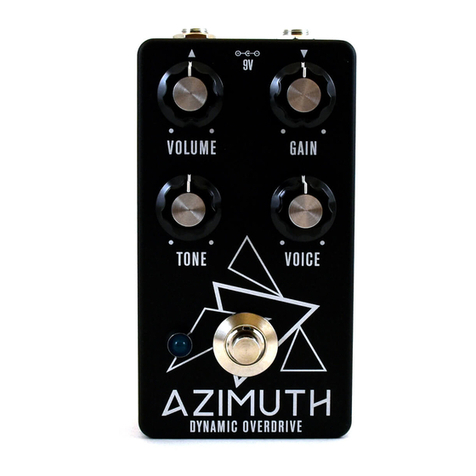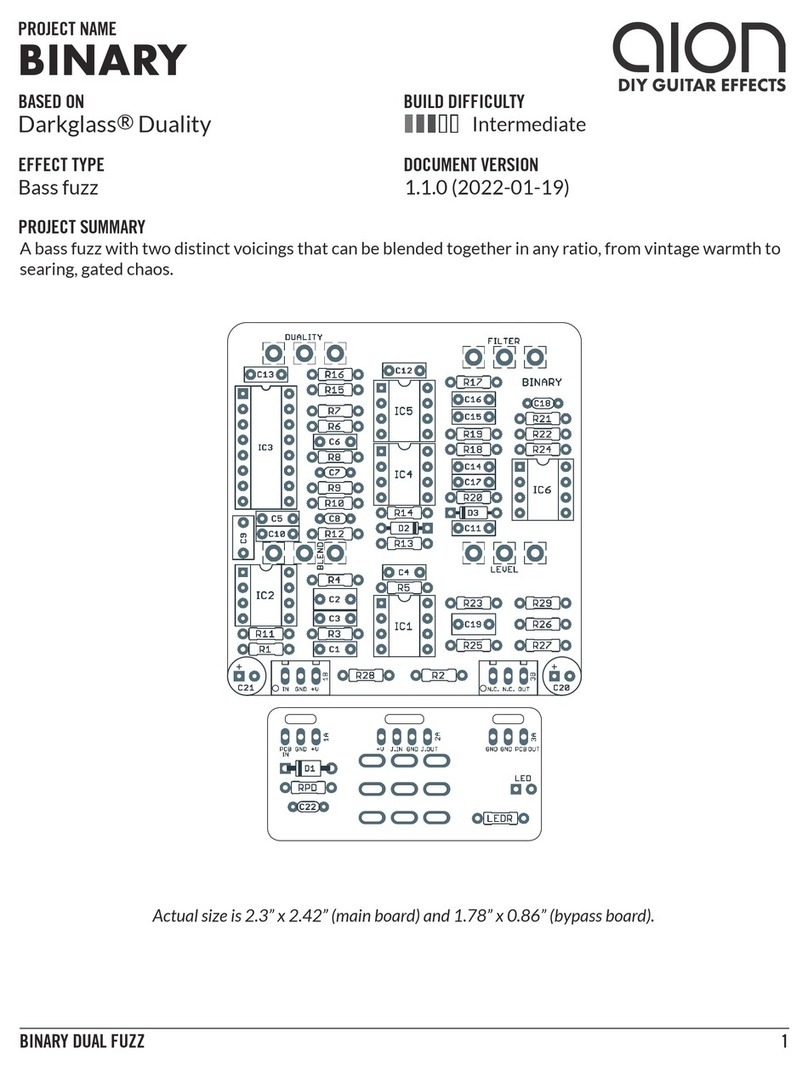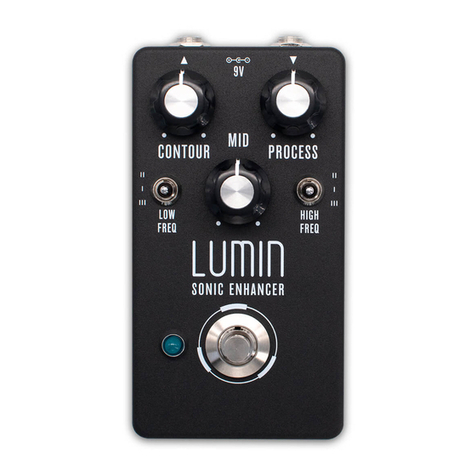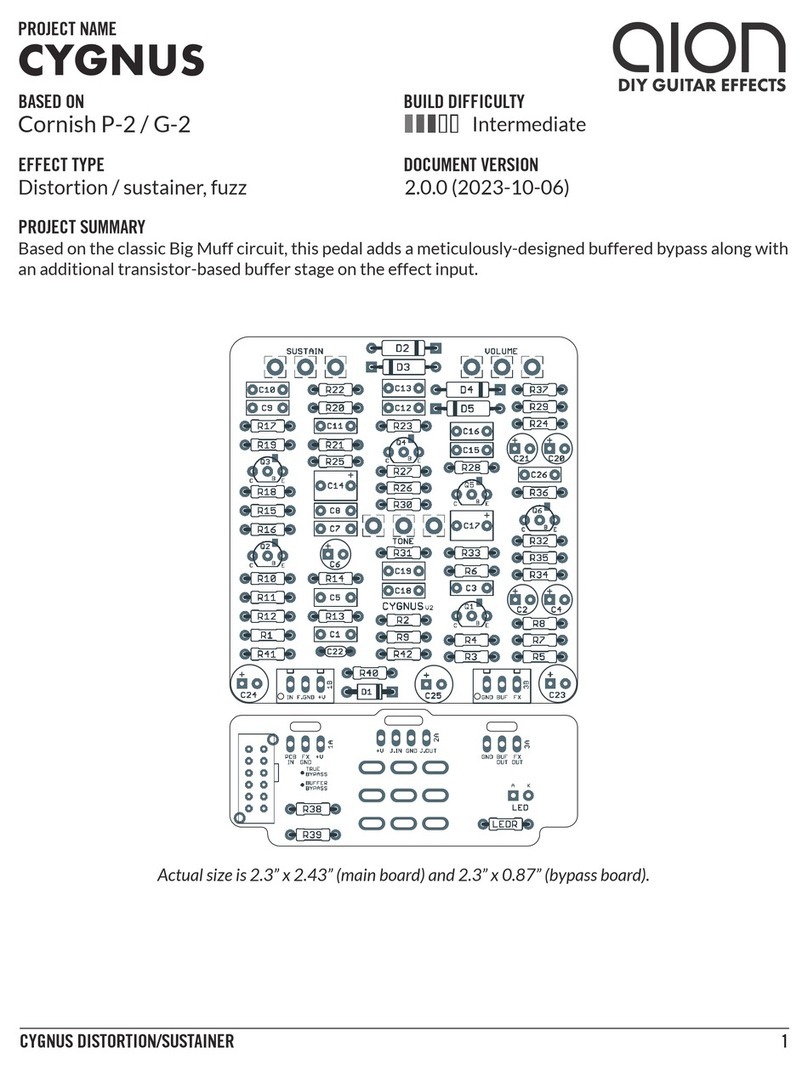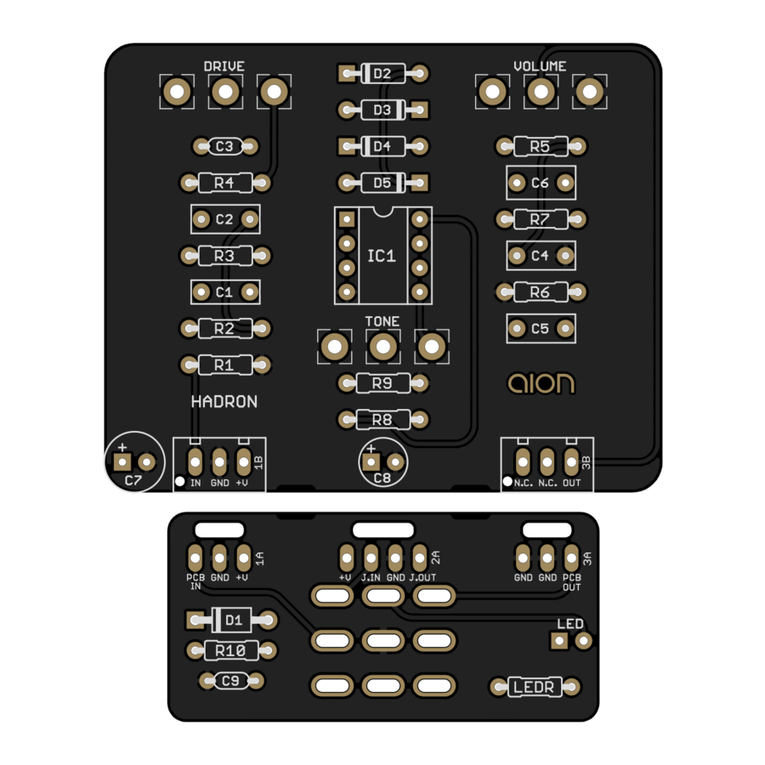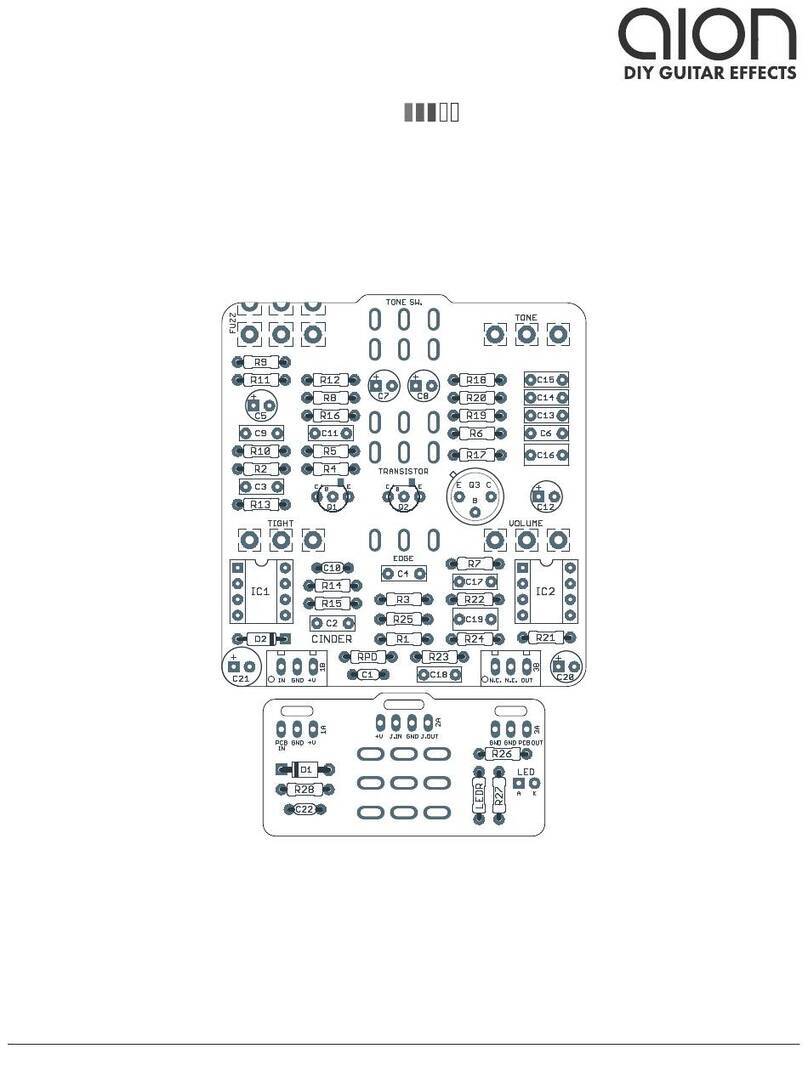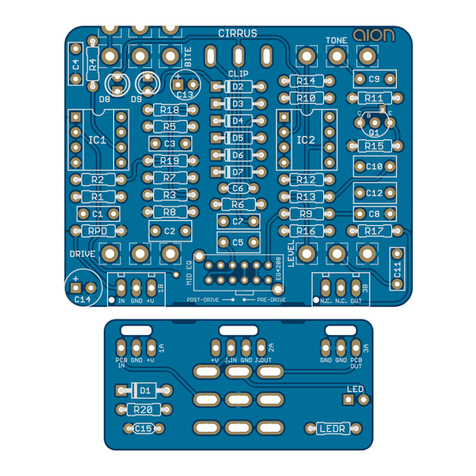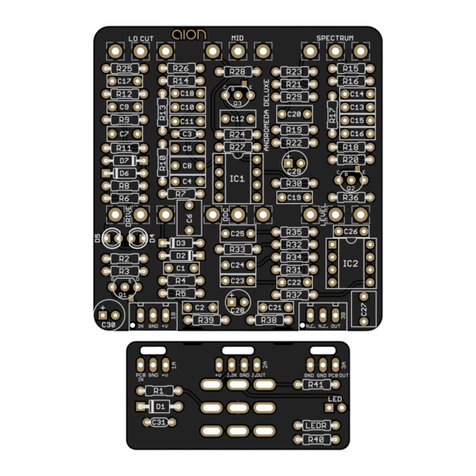
VULCAN OCTAVE FUZZ 4
PARTS LIST, CONT.
PART VALUE TYPE NOTES
C6 1uF Film capacitor, 7.2 x 3.5mm
C7 1uF Film capacitor, 7.2 x 3.5mm
C8 22uF Electrolytic capacitor, 5mm Original units used 10uF capacitors, but many were off-spec and actually
measured 22uF.
C9 1uF Film capacitor, 7.2 x 3.5mm
C10 1n Film capacitor, 7.2 x 2.5mm
C11 2n2 Film capacitor, 7.2 x 2.5mm Modification - alternate capacitors for tone section, switched in via the
Midrange switch. Use 1n8 for red (late) specs. See build notes for more.
C12 15n Film capacitor, 7.2 x 2.5mm Modification - alternate capacitors for tone section, switched in via the
Midrange switch.
C13 47n Film capacitor, 7.2 x 2.5mm
C14 1uF Film capacitor, 7.2 x 3.5mm
C15 1uF Film capacitor, 7.2 x 3.5mm
C16 100uF Electrolytic capacitor, 6.3mm Power supply filter capacitor.
C17 100n MLCC capacitor, X7R Power supply filter capacitor.
D1 1N5817 Schottky diode, DO-41
D2 BAT46 Schottky diode, DO-35 Substitute. Original uses 1N34A or other germanium.
D3 BAT46 Schottky diode, DO-35 Substitute. Original uses 1N34A or other germanium.
D4 1N34A Diode, germanium, NOS
D5 1N34A Diode, germanium, NOS
Q1 2N5089 BJT transistor, NPN, TO-92 Modern substitute. The original used 2N3565 or 2N5133. For best
results, sort for hFE (gain) of 400 or more.
Q2 2N5089 BJT transistor, NPN, TO-92
Q3 2N5089 BJT transistor, NPN, TO-92
Q4 2N5089 BJT transistor, NPN, TO-92
SUST. 50kB 16mm right-angle PCB mount pot
TONE 50kB 16mm right-angle PCB mount pot
VOL. 50kB 16mm right-angle PCB mount pot
MID SPDT Toggle switch, SPDT on-on Modification to improve usefulness of tone control. See build notes.
OCTAVE SPDT cntr off Toggle switch, SPDT on-off-on Slight modification to the original. See build notes.
LED 5mm LED, 5mm, red diffused
IN 1/4" stereo 1/4" phone jack, closed frame Switchcraft 112BX or equivalent.
OUT 1/4" mono 1/4" phone jack, closed frame Switchcraft 111X or equivalent.
DC 2.1mm DC jack, 2.1mm panel mount Mouser 163-4302-E or equivalent.
BATT Battery snap 9V battery snap Optional. Use the soft plastic type—the hard-shell type will not fit.
FSW 3PDT Stomp switch, 3PDT
ENC 125B Enclosure, die-cast aluminum Can also use a Hammond 1590N1.

